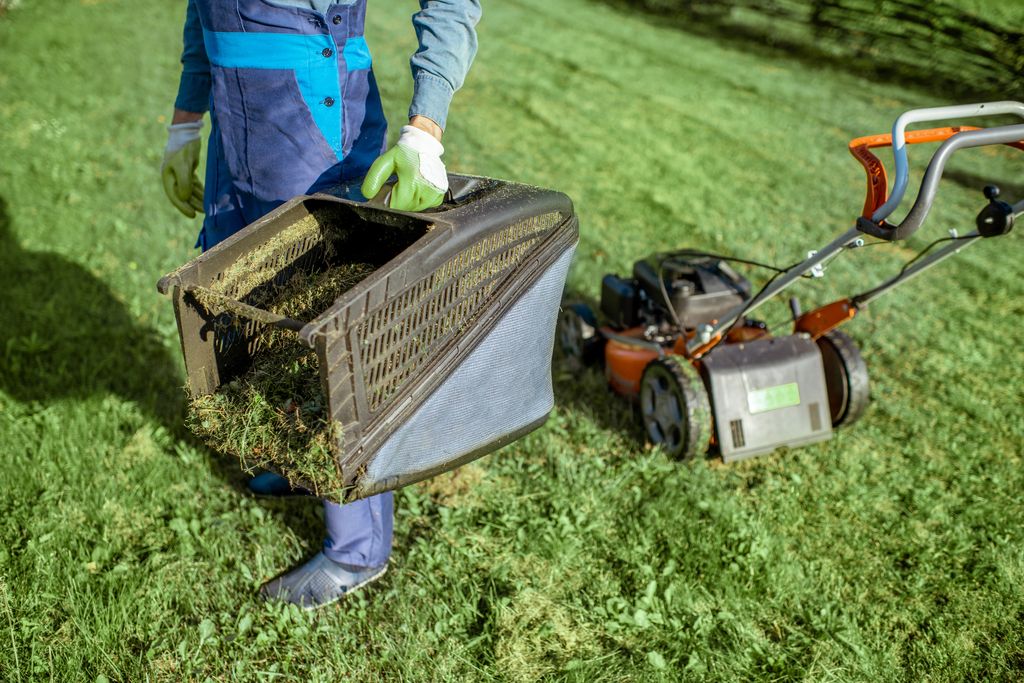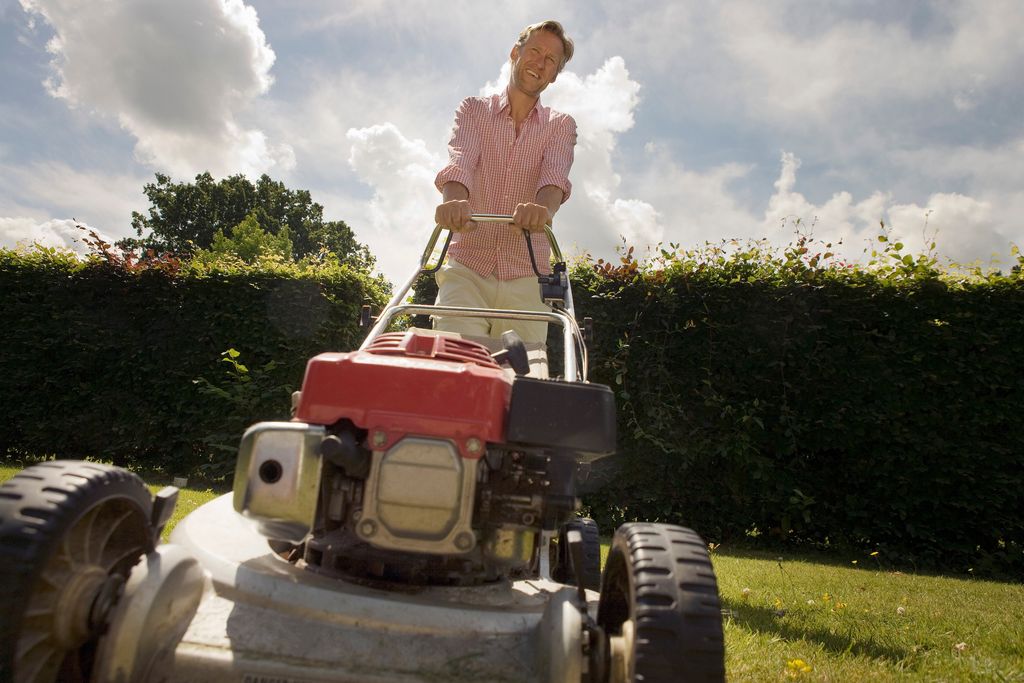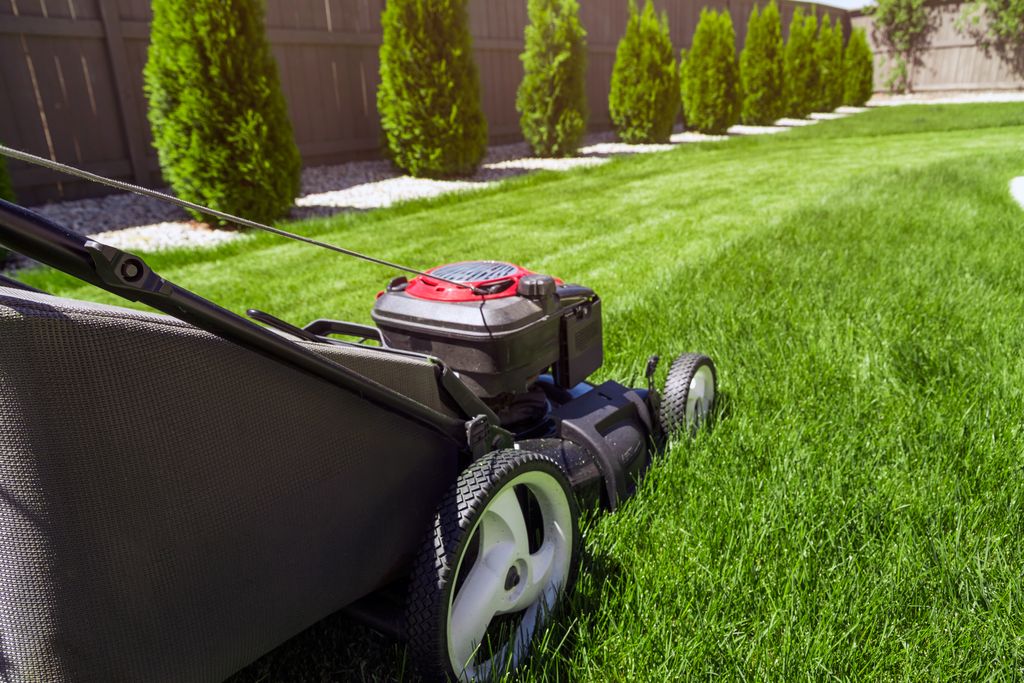When you mow your lawn, you’re left with plenty of grass clippings. Instead of bagging and disposing of them, why not use them to benefit your yard?
Lawn clippings are a valuable resource that can be recycled in various ways to enhance your lawn’s health and reduce waste.
Here’s how to make the most of your lawn clippings.
This post contains affiliate links. As an Amazon Associate, I earn from qualifying purchases at no additional cost to you.
The Value of Lawn Clippings
Grass clippings are rich in nutrients. When used correctly, they can return essential nutrients like nitrogen back to your soil, promoting healthier and greener grass.
Studies have shown that returning clippings to the lawn can reduce the need for synthetic fertilizers by up to 25%, which not only cuts costs but also minimizes chemical runoff that can harm local water systems.
By understanding and leveraging the value of these clippings, you can promote a sustainable and robust lawn ecosystem. Here are some effective ways to use lawn clippings.
Grasscycling: The Easy Way
Grasscycling is the simplest method of recycling lawn clippings. It involves leaving the clippings on your lawn after mowing.
Grasscycling has a profound impact on soil health. Over time, this practice can significantly improve the soil’s organic content, leading to better water retention, increased microbial activity, and enhanced soil structure.
Research from agronomy experts highlights that lawns managed with grasscycling practices have higher soil moisture levels and better resistance to drought conditions.
Key Benefits of Grasscycling:
- Nutrient Recycling: Clippings decompose quickly, returning nutrients to the soil.
- Moisture Retention: Clippings help retain soil moisture, reducing the need for frequent watering.
- Time and Effort Savings: No need to bag and dispose of clippings, saving you time and effort.
- Soil Structure Improvement: Regular incorporation of organic matter from clippings improves soil aeration and promotes the growth of beneficial microorganisms.
Best Practices for Grasscycling:
- Mow Regularly: Regular mowing produces shorter clippings that decompose faster.
- Sharp Blades: Use sharp mower blades to ensure clean cuts, which help clippings decompose quickly.
- Avoid Clumping: If clippings clump together, spread them evenly to prevent lawn smothering.
Composting: Creating Black Gold
Composting lawn clippings is another excellent way to recycle this yard waste. Composting turns clippings into rich, organic matter known as compost or “black gold”.
Quantifying the Benefits:
Data from various horticultural studies suggest that adding compost to garden beds can increase crop yields by up to 20% and significantly improve soil fertility over time.
The humus formed through composting enhances the soil’s ability to retain nutrients and water, fostering healthier plant growth.
Here’s how to compost your clippings:
- Mix with Other Materials: Combine grass clippings with brown materials like leaves, straw, or cardboard to balance the carbon-to-nitrogen ratio.
- Turn the Pile: Regularly turn your compost pile to aerate it and speed up decomposition.
- Monitor Moisture: Keep the pile moist but not waterlogged to support microbial activity.
Using compost in your garden or flower beds improves soil structure, enhances nutrient content, and promotes healthy plant growth.
Expert Insight:
Soil scientists, emphasizes the importance of composting in sustainable gardening: “Compost not only enriches the soil with essential nutrients but also improves its physical properties. Over time, using compost leads to a more resilient and productive garden.”
Mulching: A Protective Layer
Lawn clippings make excellent mulch for your garden beds.
Mulching with grass clippings helps in weed suppression, moisture conservation, and temperature regulation.
A study published in the Journal of Environmental Horticulture found that gardens mulched with organic materials like grass clippings require 30% less water compared to those without mulch, and experience a significant reduction in weed growth.
Benefits of Mulching:
- Suppress Weeds: A layer of clippings prevents weed seeds from germinating.
- Conserve Moisture: Mulch retains soil moisture, reducing the need for watering.
- Regulate Temperature: Mulch insulates the soil, keeping it cooler in summer and warmer in winter.
Best Practices for Mulching:
- Dry the Clippings: Let clippings dry out before using them as mulch to prevent matting and mold growth.
- Apply Evenly: Spread a thin, even layer of clippings around plants, keeping them away from stems to avoid rot.
Creating Liquid Fertilizer
Lawn clippings can also be used to make a nutrient-rich liquid fertilizer.
Here’s a simple method:
- Fill a Container: Fill a large container with fresh grass clippings.
- Add Water: Cover the clippings with water and let the mixture sit for a few days.
- Strain the Liquid: Strain the liquid and dilute it with water at a 1:10 ratio.
- Apply to Plants: Use this liquid fertilizer to water your plants, providing them with an extra nutrient boost.
Managing Excess Clippings
If you have more clippings than you can use, consider these options:
- Local Recycling Programs: Check if your community has yard waste recycling programs.
- Share with Neighbors: Offer excess clippings to neighbors for their compost piles or gardens.
- Use as Animal Bedding: Dry clippings can be used as bedding for livestock or pets.
How long does it take for grass clippings to break down into the soil?
Grass clippings can decompose quickly when left on the lawn, while composting can take anywhere from a few weeks to several months, depending on the method used.
When left on the lawn, they can decompose relatively quickly, typically within 1 to 2 weeks during active growing seasons.
This rapid breakdown occurs because the clippings are small and can easily integrate into the soil, helping to enrich it with nutrients as they decompose
Conclusion
Lawn clippings are a valuable resource that can benefit your yard in numerous ways. By grasscycling, composting, mulching, or creating liquid fertilizer, you can recycle clippings to enhance your lawn’s health and reduce waste. Implement these eco-friendly practices to make the most of your lawn clippings and enjoy a healthier, greener yard.



